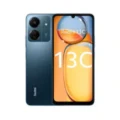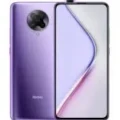Xiaomi 13T Pro
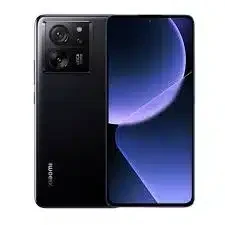


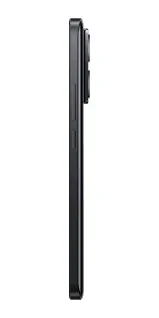
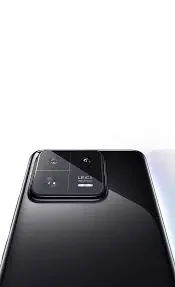
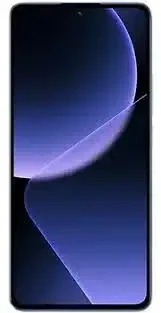
- : 12/16GB RAM Dimensity 9200+
- : 6.67" 1220x2712 pixels
- : 5000mAh 120W
- : 50MP 4320p
The Xiaomi 13T Pro is a cutting-edge smartphone that seamlessly blends style, performance, and innovation. Whether you’re a photography enthusiast, a multitasking pro, or simply seeking a powerful device, the 13T Pro has something to offer.
Striking Design and Durability
With its sleek glass front (protected by Corning Gorilla Glass 5) and a choice of glass or silicone polymer back, the 13T Pro exudes elegance. The Alpine Blue, Meadow Green, and Black color options cater to diverse tastes. Plus, it’s IP68 dust and water-resistant, ensuring durability even in challenging environments.
Mesmerizing Display
The 6.67-inch AMOLED display boasts 144Hz refresh rate, Dolby Vision, and HDR10+ support. It can reach an astounding 1200 nits (HBM) and 2600 nits (peak) brightness. Whether you’re binge-watching your favorite series or editing photos, the 13T Pro’s display delivers vivid colors and sharp details.
Powerful Performance
Under the hood, the MediaTek Dimensity 9200+ chipset fuels the 13T Pro. Its octa-core CPU (including a Cortex-X3 core) ensures smooth multitasking, gaming, and app launches. Choose from configurations with 12GB or 16GB of RAM, and storage options ranging from 256GB to a whopping 1TB (UFS 4.0).
Leica-Enhanced Photography
The triple-camera system is a standout feature. The 50MP main lens captures stunning details, while the 50MP telephoto lens offers 2x optical zoom. The 12MP ultrawide lens lets you explore creative perspectives. With Leica optics, HDR, and 8K video recording, your memories will come to life.
Lightning-Fast Charging
The 5000mAh battery keeps you powered throughout the day, and the 120W wired charging technology ensures a full charge in just 19 minutes. Say goodbye to battery anxiety!
Connectivity and Extras
Connectivity options include Wi-Fi 6e, Bluetooth 5.4, NFC, and USB Type-C 2.0. The under-display fingerprint sensor, accelerometer, gyro, proximity sensor, and color spectrum sensor enhance usability.
Pricing and Availability
The Xiaomi 13T Pro is available in three captivating colors: Alpine Blue, Meadow Green, and Black. Prices start at $650, making it an attractive choice for those seeking flagship features without breaking the bank.
Experience the future of mobile technology with the Xiaomi 13T Pro. Get ready to redefine your smartphone journey.
You can views all products of Xiaomi. also visit it official site.
Specs
Network
| 2G Network GSM 850 / 900 / 1800 / 1900 - SIM 1 & SIM 2 (dual-SIM) CDMA 800 / 1900 |
GSM 850 / 900 / 1800 / 1900 - SIM 1 & SIM 2 |
| 3G Network |
HSDPA 800 / 850 / 900 / 1700(AWS) / 1900 / 2100 |
| 4G Network |
1, 2, 3, 4, 5, 7, 8, 12, 13, 17, 18, 19, 20, 25, 26, 28, 32, 38, 39, 40, 41, 42, 48, 66 |
| 5G Network |
1, 3, 5, 7, 8, 20, 28, 38, 40, 41, 66, 75, 77, 78 SA/NSA |
| Speed |
HSPA, LTE-A, 5G |
LAUNCH
| Announced | September, 2025 |
| Status |
Available. Released 2023, September 26 |
BODY
| Dimensions | 162.2 x 75.7 x 8.5 mm (6.39 x 2.98 x 0.33 in) |
| Weight | 200 g or 206 g (7.05 oz) |
| Build | Glass front (Gorilla Glass 5), glass back or silicone polymer back, plastic frame |
| SIMs SIM (Subscriber Identity Module) is a small card that contains mobile network subscriber's account information. This allows the phone using the card to attach to a mobile network. The SIM card is most commonly associated with GSM and UMTS mobile networks. Moving a SIM card from one phone to another allows a subscriber to switch mobile phones without having to contact their mobile network carrier. SIM cards can also be used by a phone to store limited amounts of data, such as phone numbers and text messages. |
Nano-SIM and eSIM or Dual SIM (Nano-SIM, dual stand-by) IP68 dust/water resistant (up to 1.5m for 30 min) |
Display
| Display Type Display Technology => A number of display technologies and types used in mobile phones => TFT (Thin Film Transistor), IPS (In-Place Switching), OLED (Organic Light Emitting Diode), AMOLED (Active-Matrix Organic Light-Emitting Diode), Super AMOLED (an even advanced version of AMOLED), Resistive Touchscreen (Resistive touchscreens contain two layer of conductive material with a very small gap between them which acts as a resistance), Capacitive Touchsceen (Capacitive touchscreen technology consists of a layer of glass coated with a transparent conductor) | AMOLED, 68B colors, 144Hz, Dolby Vision, HDR10+, 1200 nits (HBM), 2600 nits (peak) |
| Size | 6.67 inches, 107.4 cm2 (~87.5% screen-to-body ratio) |
| Resolution | 1220 x 2712 pixels, 20:9 ratio (~446 ppi density) |
| Protection Display Protection => Gorilla Glass is a special alkali-aluminosilicate glass shield with exceptional damage resistance that helps protect mobile displays from scratches, drops, and bumps of everyday use, It is always better to go for a smartphone with Gorilla Glass for that added protection and peace of mind. | Corning Gorilla Glass 5 |
PLATFORM
| Operating System OS => Every computer system run on a base software called Operating System (OS). Operating System controls all basic operations of the computer (such as smartphone, PDAs, tablet computers and other handheld devices). The Operating System allows the user to install and run third party applications (apps), apps are used to add new functionality to the device. | Android 13, upgradable to Android 14, HyperOS |
| Chipset Chipset is a group of integrated circuits designed to perform one or a more dedicated functions, often with real time computing constraints, Popular smartphones are equipped with more advanced embedded chipsets that can do many different tasks depending on their programming. | Mediatek Dimensity 9200+ (4 nm) |
| CPU CPU (Central Processing Unit) mostly known as processors, CPU processes instructions in order to carry out certain functions that make your device operate properly. Processors are often described as the brain of computers, smartphones and tablets, Smartphones and tablets rely on processors to carry out their every task, Processors are an incredibly important factor in selecting any type of computing device, including your smartphone. | Octa-core (1x3.35 GHz Cortex-X3 & 3x3.0 GHz Cortex-A715 & 4x2.0 GHz Cortex-A510) |
| GPU GPU (Graphics Processing Unit) is a single-chip processor designed to rapidly manipulate and alter memory to accelerate the creation of images in a frame buffer intended for output to a display, This includes things such as lighting effects, object transformations, and 3D motion. | Immortalis-G715 MC11 |
MEMORY
| Card Slot Memory Card Slot is a special slot for inserting a memory card. Memory cards allow you to expand the phone's built-in memory, A memory card (sometimes called a flash memory card or a storage card) is a small storage medium used to store data such as text, pictures, audio, and video, for use on small, portable or remote computing devices such as mobile phones, mp3 players, digital cameras. | No |
| Internal | 256GB 12GB RAM, 512GB 12GB RAM, 1TB 16GB RAM UFS 4.0 |
MAIN CAMERA
| Cameras Specs Today’s smartphones come equipped with a very comprehensive set of camera related specifications. Our smartphone, for many of us, has become our primary camera due to it being the one we always have with us. |
50 MP, f/1.9, 24mm (wide), 1/1.28", 1.22µm, PDAF, OIS 50 MP, f/1.9, 50mm (telephoto), 1/2.88", 0.61µm, PDAF, 2x optical zoom 12 MP, f/2.2, 15mm (ultrawide), 1/3.06", 1.12µm |
| Video | 8K@24fps, 4K@24/30/60fps, 4K/1080p@30fps HDR10+, 1080p@30/60/120/240fps; 10-bit LOG, gyro-EIS |
| Camera Features |
Leica lens, LED flash, HDR, panorama |
SELFIE CAMERA
| Cameras Specs Today’s smartphones come equipped with a very comprehensive set of camera related specifications. Our smartphone, for many of us, has become our primary camera due to it being the one we always have with us. |
20 MP, f/2.2, (wide), 0.8µm |
| Features |
HDR |
| Video | 1080p@30fps, HDR10+ |
SOUND
| Loudspeaker | Yes, with stereo speakers |
| 3.5mm jack |
No 24-bit/192kHz Hi-Res audio |
COMMS
| WLAN |
Wi-Fi 802.11 a/b/g/n/ac/6e/7, tri-band, Wi-Fi Direct |
| Positioning |
GPS (L1+L5), GLONASS (G1), GALILEO (E1+E5a), NavIC (L5), BDS |
| Bluetooth Bluetooth is a wireless communications technology for exchanging data between mobile phones, headsets, computers and other network devices over short distances without wires, Bluetooth technology was primarily designed to support simple wireless networking of personal consumer devices. | 5.4, A2DP, LE |
| Infrared Infrared connectivity is an old wireless technology used to connect two electronic devices. It uses a beam of infrared light to transmit information and so requires direct line of sight and operates only at close range. | |
| USB | USB Type-C 2.0, OTG |
| NFC NFC (Near field communication) is a set of standards for smartphones and similar devices to establish peer-to-peer radio communications with each other by touching them together or bringing them into proximity, usually no more than a few inches. | |
| Radio |
Features
| Sensors Sensors are electronic components that detects and responds to some type of input from the physical environment. The specific input could be light, heat, motion, moisture, pressure and location, The output is generally a signal that is converted to use in computing systems, a location sensor, such as a GPS receiver is able to detect current location of your electronic device. |
Fingerprint (under display, optical), accelerometer, gyro, proximity, compass, color spectrum |
BATTERY
| Battery Type Battery Type => Cell phones run on various kinds of batteries depending on the manufacturer, phone size or shape and features. There are basically four types of cell phone batteries => Lithium Polymer, Lithium Ion, Nickel Metal Hydride and Nickel Cadmium. | Li-Poly (Lithium Polymer) |
| Capacity Battery Capacity is a measure (typically in Amp-hr) of the charge stored by the battery, and is determined by the mass of active material contained in the battery. The battery capacity represents the maximum amount of energy that can be extracted from the battery under certain conditions. | 5000 mAh |
| Placement | non-removable |
| Charging The functionality responsible for recharging batteries in portable devices, such as mobile phones, significantly influences both battery lifespan and the practicality of daily product usage.The charging process, encompassing factors like voltage, current, and completion actions, is contingent upon the battery's size and type.Contemporary battery chargers dynamically adjust charging parameters based on the battery's current charging state. Charging an empty battery poses no safety risk, allowing for a quicker charging process. Consequently, many charging speed benchmarks, including ours, specify the battery level achieved after a 30-minute session on an empty battery.Standard chargers with a power output of 5V/1A, equivalent to 5W, serve as a baseline, with anything surpassing this speed classified as quick or fast charging. | 120W wired, PD3.0, QC4, 100% in 19 min (advertised) |
MISC
| Colors |
Alpine Blue, Meadow Green, Black |
| Model | 23078PND5G |
| Price | $ 650.00 / C$ 999.99 / £ 560.00 / € 624.90 |
TESTS
| Performance |
AnTuTu: 1214085 (v9), 1470464 (v10) GeekBench: 4859 (v5), 4518 (v6) GFXBench: 84fps (ES 3.1 onscreen) |
| Display | Contrast ratio: Infinite (nominal) |
| Loudspeaker | -26.7 LUFS (Good) |
| Battery (new) | Active use score 11:50h |
| Battery (old) | Endurance rating 102h |
Reviews
Disclaimer Note
We strive to maintain accurate and up-to-date content on our website for general information purposes only. Please refrain from using the material for business, legal, or any other decisions.


